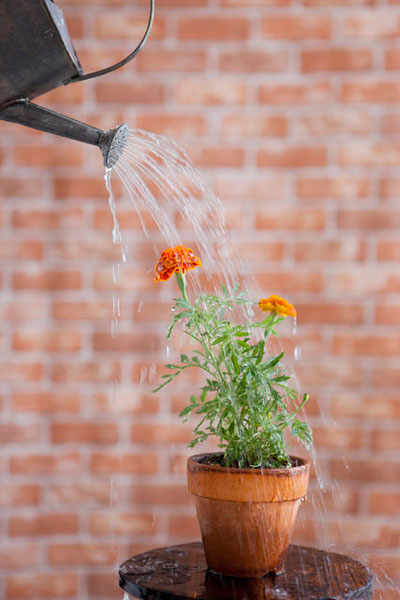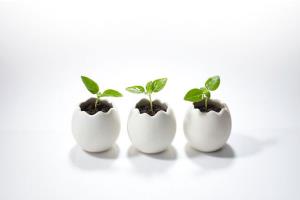Can dragon fruit be planted in pots? how should it be cultivated?
Pitaya is a popular fruit in summer. It will rot if it is not preserved well. At this time, many people will be distressed. Can pitaya be planted in pots and how should it be cultivated? The following is for the editor to share his life experience with you.

Can dragon fruit be planted in pots?
The dragon fruit has strong adaptability and can be planted in the environment where the temperature is not lower than 8 ℃ for a long time, and it can be put indoors in places with low winter temperature in the north. A small amount of cultivated dragon fruit can buy seedlings or ask a friend for some pruned branches (10-15 cm long), which can generally survive when inserted in plain sand. If well managed, flowers will be seen more than 70 days after planting seedlings.
How should it be cultivated?
1. Selection of basin
Pitaya is a shallow-rooted plant. Prepare a mud basin with a drainage hole at the bottom. If there is no mud basin to find a wooden box, as long as it is good air permeability, it is best not to use plastic, too airtight containers. Before planting pitaya, soak the pot with clear water for several hours to discharge the dirty gas from the stomata on the basin wall, otherwise it will affect the root growth of the plant.
two。 Selection of soil quality
Planting dragon fruit should first find some neutral or slightly acidic soil, which must be loose and breathable, and alkaline soil is not conducive to cultivation. We can also make our own culture soil, which can be mixed with rotten leaf soil, manure soil and coarse river sand at 6:1:1.
3. Pot method
Cuttings are the easiest way for potted dragon fruit to survive. As long as the seedlings grow roots and send out new branches, the pots can be moved. A water outlet should be made at the bottom of the basin, and a tile can be used around the hole to prevent sand from leaking out, or a layer of large pebbles can be laid first. Then pour into the soil, put the two seedlings on the mound, and the roots are scattered in the soil. Then use your hands to gently press the soil on the edge of the basin, pour water through, wait a week and move to the balcony.
4. Cultivation and management
The dragon fruit is very resistant to drought, so the water does not need to be irrigated too frequently, but to keep the soil moist, the organic fertilizer solution based on nitrogen fertilizer can be diluted once a week. The lateral buds on the stem branches should be removed and the item buds should be retained so that they can grow taller. When the plant is about 1 meter tall, cut off the tip of the stem about 3 centimeters long at the top, so that lateral branches can be sent out at the top so that they will not grow any more. When the apical lateral branch grows to about 50 cm. And then on the edge of the basin with a high bamboo pole, tie the crossbeam at the top of the bamboo pole, and tie the side branches to the crossbeam to make it flat or droop naturally. When the lateral branch is more than 80 cm, the stem tip should be cut off about 3 cm in order to reduce nutrition consumption, promote flower bud differentiation and blossom and bear fruit earlier. If well managed, it will blossom in 7-8 months.
5. Management of flowering period
The flowering period of dragon fruit is long, because many flowers are large, so the demand for nutrition is also high. In addition to the need to add fertilizer and water, organic liquid fertilizer containing phosphorus and potassium should be applied every 5-7 days half a month before flowering. If potted dragon fruit is planted on the balcony or roof, because the amount of soil in the pot is small and the nutrition supply is limited, so the side branches should not stay too long, and only 1 fruit is recommended for each branch. Pitaya can be self-pollinated and fruited, and can be pollinated artificially under certain conditions. In the evening, when the flower is in full bloom, use a new brush to dip pollen from the stamen anther of one flower and bounce it on the pistil stigma of another flower.
6. Management after fruit harvest and winter
The fruit can be harvested when it changes from green to red, and the fruit has been picked after November of each year. Then we should apply the base fertilizer again, the method is to dig up the soil around the edge of the basin about 10 feet deep with a small hand shovel, pile the soil at the root of the plant temporarily, then apply the organic fertilizer mixed with stable manure and chicken manure, and then reduce the soil and irrigate it once to prepare for the winter. If you are in the north, you should pay attention to move to indoor cold prevention. No fertilizer can be applied during the winter. Water properly. Then move outside after the middle of May, and cut the old side branches from the near root, so that new side branches can be sent out, otherwise the original side branches are not suitable to blossom and bear fruit.
The above is the life experience shared by the editor with you. Pitaya can be cultivated in pots. Of course, we should also pay attention to methods. I hope we can help you in our lives.
- Prev

What are the breeding methods of potted rich trees? what are the matters needing attention in breeding?
What are the breeding methods of potted rich trees? what are the matters needing attention in breeding?
- Next

Are there any indoor potted plants that bloom all the year round
Are there any indoor potted plants that bloom all the year round
Related
- Wuhan Hospital Iron Tree Blooming Result Was Instantly Frightened by the Gardener Master
- Which variety of camellia is the most fragrant and best? Which one do you like best?
- What is the small blue coat, the breeding methods and matters needing attention of the succulent plant
- Dormancy time and maintenance management of succulent plants during dormancy
- Minas succulent how to raise, Minas succulent plant pictures
- What are the varieties of winter succulent plants
- How to raise succulent plants in twelve rolls? let's take a look at some experience of breeding twelve rolls.
- Attention should be paid to water control for succulent plants during dormant period (winter and summer)
- Watering experience of twelve rolls of succulent plants
- Techniques for fertilizing succulent plants. An article will let you know how to fertilize succulent plants.

